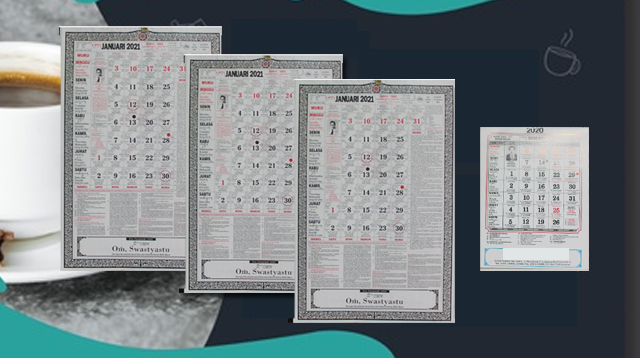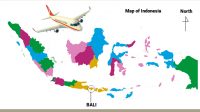UNTIL these days Balinese Hindu community still applies its Balinese traditional calendar as guidance for executing particular activities. It is closely related to the implementation of religious teachings that suggest choosing the auspicious days. Selection of the auspicious days is expected to help support the smoothness and safety of their activities under blessing of God.
Basically, the guidance refers to pawukon and solar system calendar. They are better known as wariga dewasa written in palm-leaf manuscript. Then, in modern times it has been made into paper-based books. For practical usage, calendar makers then print it into wall and table calendar.
One of the famous calendar authors is Bambang Gde Rawi and Sons. His wall calendar carries the names of the day on left column. The days of the week are written in Bahasa Indonesia, Balinese (with Balinese script), English, Mandarin and Japanese. Meanwhile, the second row above carries the wuku (seven-day week) which totally amounts to 35.
Then, each box of the date contains the months in Mandarin and Arabic along its respective date. There are also wewaran (three-, four-, five-day week et cetera). Balinese full moon is marked with red big dot, while new moon is marked with big black dot and the date of new month starts the next day.
The other information is the list of festival of clan temple, universal temple and dang kahyangan temples (dedicated to honor ancient sages) written in the sequence of dates. The left column carries ala ayuning dewasa (bad and auspicious days). Last but not least, the national and religious days are also mentioned. So, the calendar is expected to give advantages to wider community.
There have been carried when they can choose special days for executing particular activities. Each day of the month has its own description based on calculation of pawukon and solar cycle.
If people do not understand which days to be chosen, they can consult to a temple priest or Brahmin priest. Aside from mastering the management and implementation of religious ceremonies, they both will also know about this wariga dewasa.
In brief, Hindu communities in Bali still refer to the calendar to look for auspicious days for executing some activities as mentioned below:
- Religious activities: human rite of life cycle (tooth filing, wedding and cremation)
- Activities of farming in broader sense (including when to start cultivating land or to move livestock)
- When to start running a business
For temple festival, they can choose auspicious day based on pawukon or lunar calendar. Examples of pawukon-based auspicious days are Buda Kliwon (falls on Wednesday), Anggara Kasih/Anggara Kliwon (Tuesday) and Tumpek/Saniscara Kliwon (Saturday) falling every 35 days. Calculation of the days is based on the day, five-day week (panca wara) and seven-day week (wuku but not sapta wara or seven-day week).
If a temple is inaugurated on Buda Kliwon Sinta (Pagerwesi), for instance, the temple festival will fall on the same day (every 6 x 35 days = 210 days) or next seven months in Christian calendar. It is just like a birth day (do not confuse with birth date). Meanwhile, if selecting a full moon, the next temple festival will fall on the same full moon in which the day may be different. For example, people choose the full moon in the fourth month of Balinese calendar (October), the festival will fall on the same full moon.
Aside from auspicious days, the wariga dewasa also carries prohibition or inauspicious days to perform particular days. For instance, the combination of the day, five-day week (Umanis, Paing, Pon, Wage and Kliwon) and Wuku will make particular names like Titi Buwuk (obsolete bridge), Kala Gotongan and Semut Sedulur (marching ants). These days are not suggested to perform cremation or burial. Based on local belief, disobeying it will bring in bad things or result in continued death (like marching ants).
People are forbidden to cut bamboo on Sunday because it is actually auspicious day to plant bamboo. Logically, it may mean to give the opportunity to bamboo to grow so that any activities that can reduce its clusters should be stopped.










